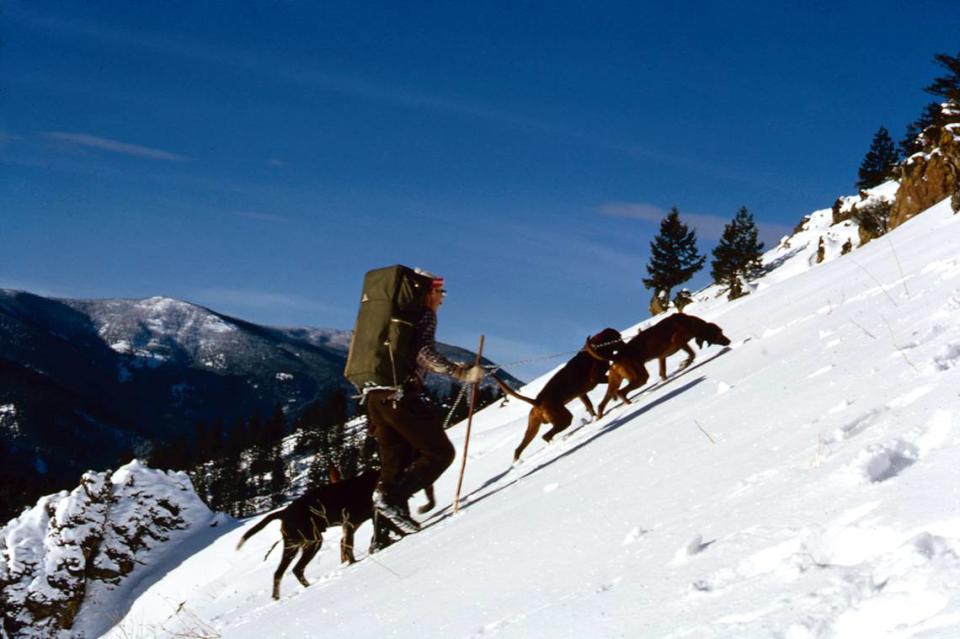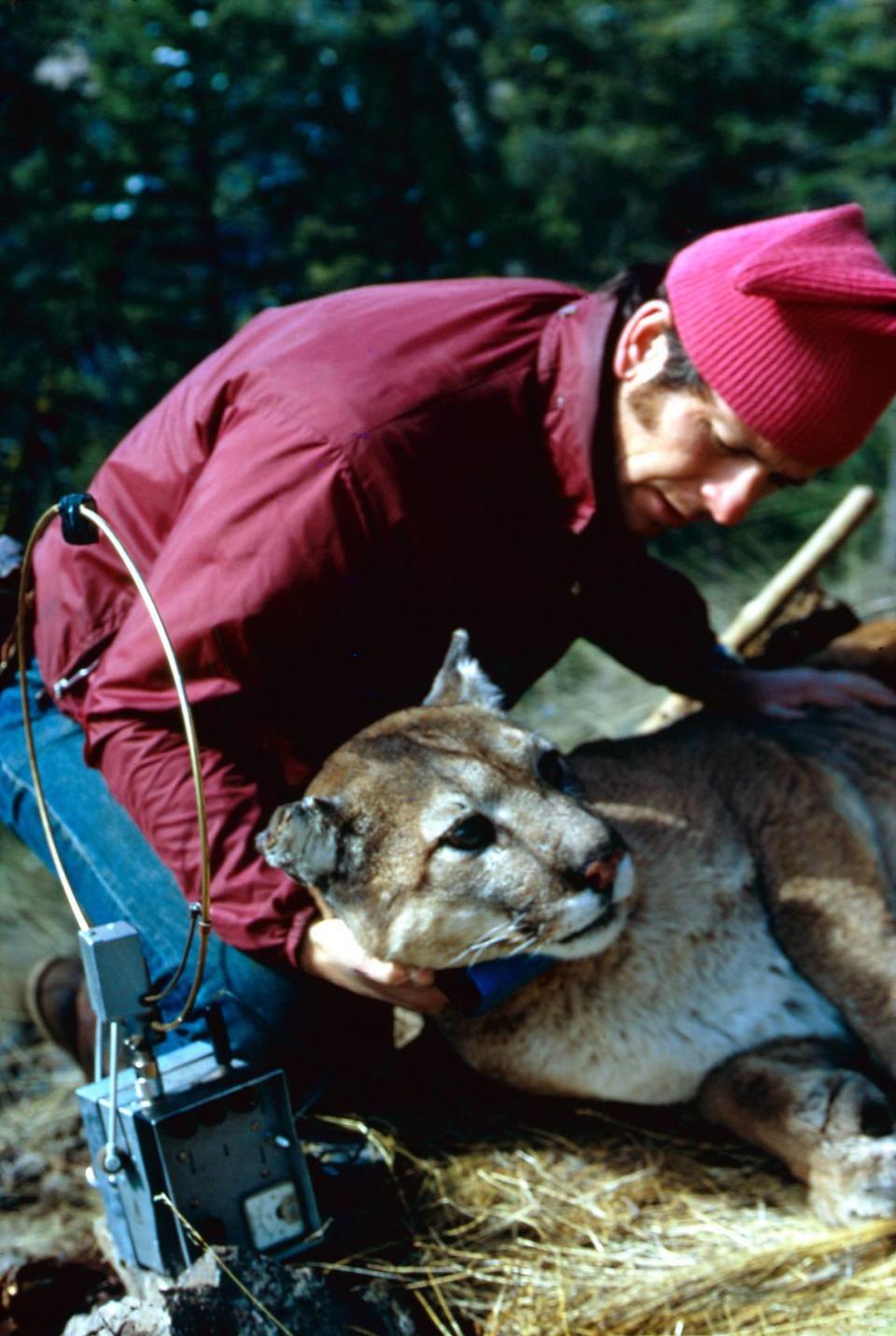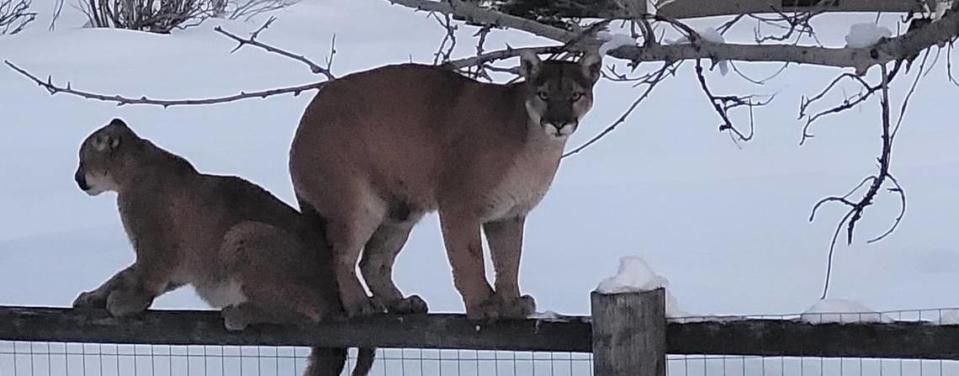Idaho removed mountain lion quotas. Other states went further. Is the animal in peril?
North America’s biggest cat, Puma concolor, goes by many names. Mountain lion. Cougar. Catamount. Puma. Panther.
The discord apparent in the efforts labeling it reflects the elusive nature of the animal. Rarely seen, cougars prefer to avoid humans and hunt in solitude, relying on stealth instead of savagery.
A consequence of their evasive nature is that these animals can be woefully misunderstood. Once considered varmints, mountain lions across the U.S. were shot on sight. Until the early 1970s, a hunter could even earn a $50 bounty for killing one.
So long the victims of misinformation and erroneous legend, the mountain lion still can inspire lingering fear in the public — occasionally capturing headlines for wandering too close to our ever-creeping backyard borders. Last weekend, a cougar was even spotted hunting seabirds on Oregon’s iconic Cannon Beach.
Roger Phillips of Idaho Fish and Game said in a phone interview that every year the department gets calls and complaints about cougars “by the dozens.” The agency has killed at least four mountain lions this year.
People often assume that the way to prevent run-ins between these animals and humans or their livestock is to kill more mountain lions through hunting and/or trapping. This remains the prevailing — and faulty — intuition regarding wildlife management of mountain lions today, said Josh Rosenau, director of Policy and Advocacy at the Mountain Lion Foundation.
Several states in the West, including Idaho, have loosened hunting laws to promote culling more cougars. But the belief that this will lessen conflict ignores what we know of how mountain lions structure their societies, Rosenau explained to the Idaho Statesman. According to critics like him, states are not using sound science to make decisions.

How mountain lions live and roam
Wildlife biologist Maurice Hornocker, now 91, has studied mountain lions since 1963. He was the first to systematically find and follow cougars in the wild, taking note of their ecology and behaviors. After years of careful tracking, before and during the rise of telemetry and radio collars, he laboriously learned that cougar populations self-regulate.
The nature of mountain lion biology is that young females will usually move into territories neighboring their mothers, but young males — in search of food and females — will travel long distances from home as a strategy to avoid inbreeding, Rosenau said.
Resident females defend their home ranges, usually 6 to 10 miles across, communicating with scent markings and chasing away nosy intruders. They are used to living in their landscapes; they know where the farms, pets and people are; and they know what places to avoid. It’s usually a young migratory male that wanders into unfamiliar land.
But hunters and hound teams could encounter the resident female first. And killing her creates an open territory. The young male just passing through is not going to get chased out. The orphaned cubs, who normally receive up to 2 years of maternal care, go hungry. Driven by hunger, they may head out on their own before they’re ready and look for any food they can find, whether that’s a deer, a pet or a small child playing in the woods.
Thus, “conflict is more likely when you disrupt the population structure that the mountain lions are maintaining on their own,” warned Rosenau.

Hornocker’s storied career established a firm foundation of evidence for research-backed wildlife management practices, as described in his new memoir, “Cougars on the Cliff.”
By 1975, Western states had terminated bounties and designated mountain lions as a big-game species, which confers regulatory status on hunts and promotes wildlife management through scientific information. Consequently, the species rebounded throughout the West, with evidence of mountain lions recently recolonizing areas in the Midwest and even in eastern regions of the country.
Some states are declaring open season on cougars
In recent years, states such as Idaho, Montana and Utah have sought a more open-season approach.
On April 19, Montana Fish, Wildlife and Parks revealed plans to change the current quota system. The state could choose to reduce the mountain lion population by up to 40 percent over the next six years through hunting — something not supported by any ecological evidence. This change came on the heels of legislation introduced the prior year simplifying hunting regulations and “bringing uniformity across the state of Montana.”
On May 3, new legislation went into effect in Utah allowing year-round cougar hunting and introducing trapping to the state. House Bill 469 was a wide-ranging wildlife bill which initially said nothing of mountain lions, but these provisions were tacked on at the 11th hour, with no public comment or scientific reasoning offered, drawing rebuke from several parties who saw it as “a repudiation of science and sound wildlife management to appease narrow political interests,” according to a Salt Lake Tribune story.
The legislation was based on the assumption that killing more cougars would translate to more elk and mule deer for humans to hunt. But a recent study called this thinking into question and suggested that culling cougar populations may have the opposite effect.
As of March 2021, Idaho Department of Fish and Game removed all statewide mountain lion harvest quotas, allowing hunters to kill as many of them as they want for 10 months of the year. According to Phillips, the reason for this change was twofold: to help the prey population (as in Utah) and to provide uniformity across the state (as with Montana).
But statewide consistency in regulations could come at a cost. Rosenau said relaxing statewide regulations on hunting “removes the incentive to monitor populations,” since monitoring programs are mostly set in place to fine-tune hunting quotas for the following years.
The population size of mountain lions is hard to pin down, even with monitoring programs. Since male cougars can occupy a territory of up to 400 square miles and often cross state lines, numbers can seem stable even when they’re not.
The number of new sink populations in the U.S., where cougar death rates exceed birth rates, is growing year after year, Rosenau said — and that’s a major concern.

Mountain lions and ecosystem health
Conservation efforts to protect mountain lions can benefit other species. As solitary hunters, they leave most of their kills behind, compared to wolves and other species who hunt and eat in packs. Mountain lion leftovers support countless species of insects, birds and mammals.
In a 2018 study, researchers found 215 species of beetles in prey animals killed by mountain lions. In turn, birds such as eagles and other migrating raptors rely on worms and insects in carcasses. The carrion is also a critical food source for other predators. Foxes depend on cougar prey during cold winters, and lion kills are critical for bears entering or emerging from hibernation. A 2017 study found that 39 species of birds and mammals visit puma kills — that’s the most scavenger species ever reported convening around a carcass.
Cougars also have profound indirect effects on their ecosystems through a phenomenon known as the “ecology of fear.” When you have apex carnivores on the landscape, the prey are more cautious, and that behavior has ripple effects.
For one, the prey animals run out into the roads less, “which means about a million and a half dollars less per year in traffic accidents,” according to Rosenau. Moreover, a cougar in the area keeps game herds on alert, reducing the amount of time deer and elk spend browsing agricultural land, which means happier farmers, and riparian vegetation, which means healthier waterways.
As cougars and wolves have both rebounded in the West, there are signs of a landscape returning to its natural order. Rosenau pointed out that in the past few years, packs of wolves could be witnessed chasing mountain lions again.
“Historically, this would have happened all the time,” said Rosenau, but for a long time, there just weren’t enough mountain lions.
Across the West, people are using technologies new and old to coexist with cougars, such as livestock guardian dogs, electric fences and motion-activated lights or sprinklers. If the first impulse to depredation is to respond with more relaxed hunting laws, could history repeat itself to the times of insufficient cougar populations?
It’s something Rosenau said he worries about — that “we’re pushing back to the bounty era.”


